Abstract
Accidental general hypothermia is defined as an unintentional lowering of the body temperature in a previously conscious patient due to exposure. Even mild degrees of hypothermia may be followed by death if treatment is not instituted promptly. Hypothermic patients who are still conscious may rewarm spontaneously. They should not be left unattended and, if the facilities are available, rapid rewarming appears to be the treatment of choice. Unconscious patients who are presumed to have a lower temperature of prolonged duration may not benefit from rapid rewarming. All hypothermia victims showing signs of life are potential survivors, but even with good facilities the mortality rate may be high.
Full text
PDF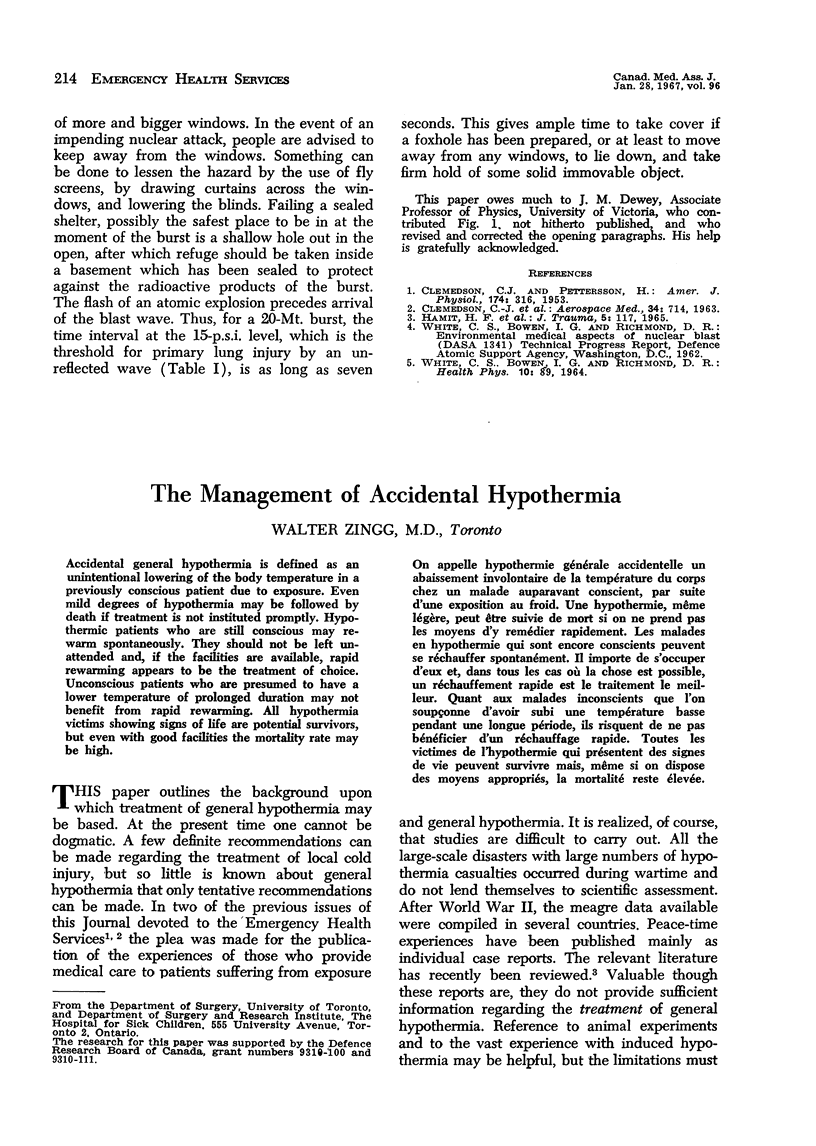
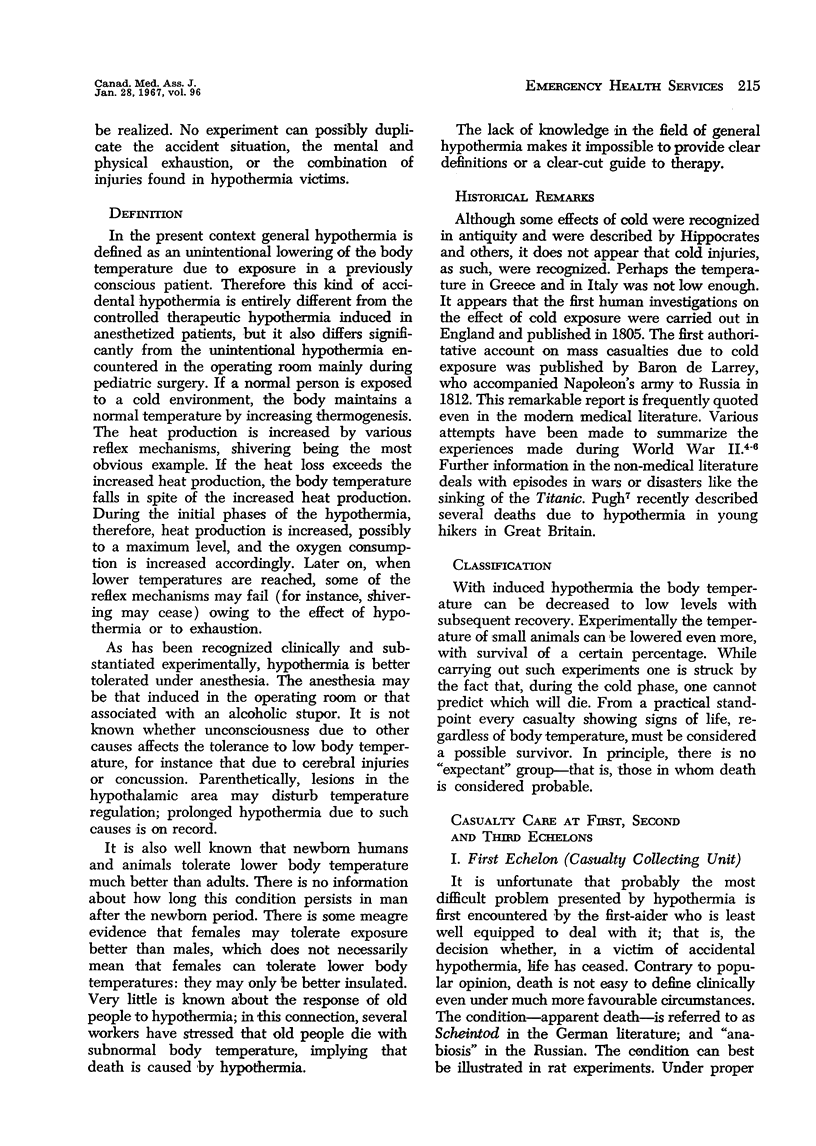
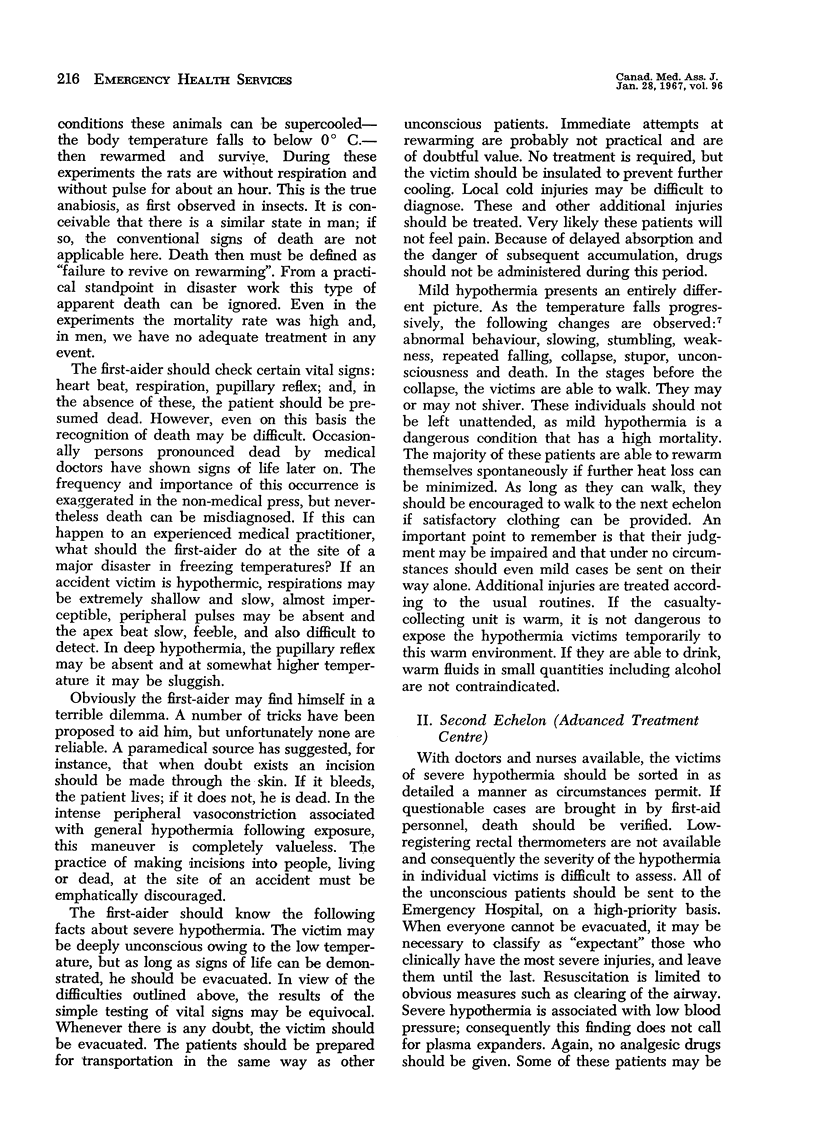
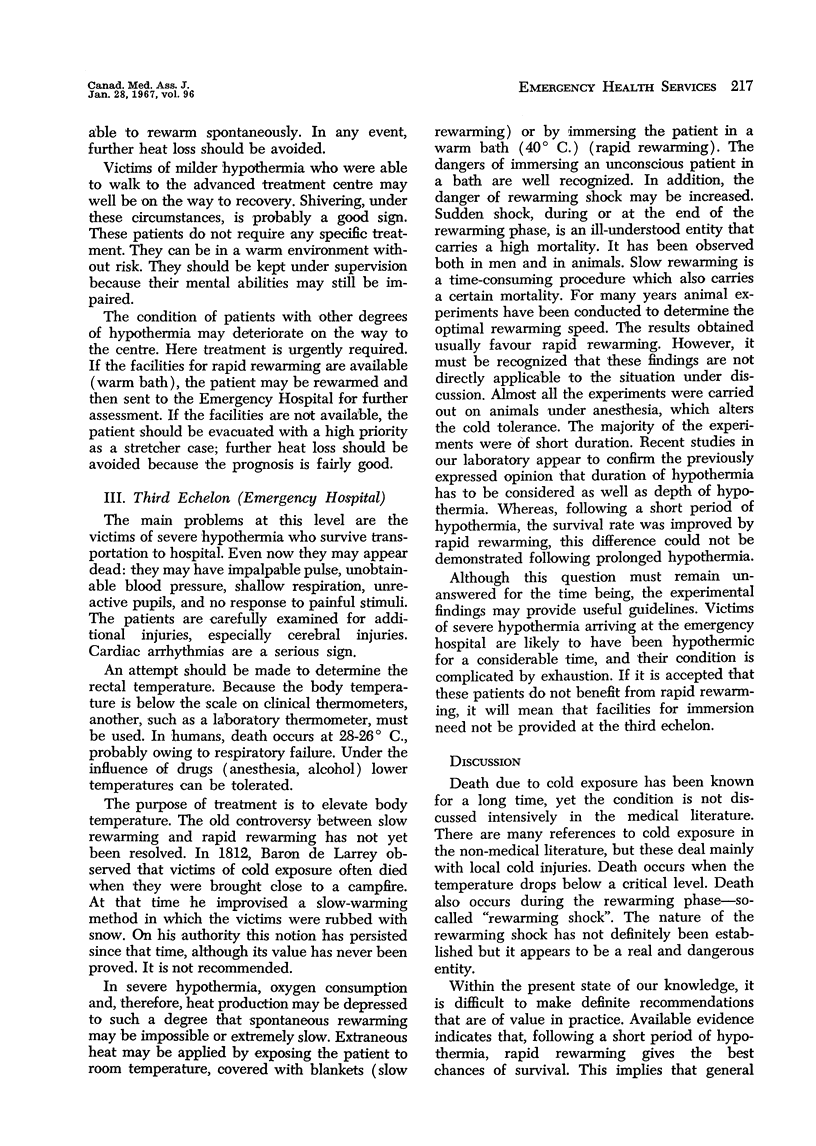
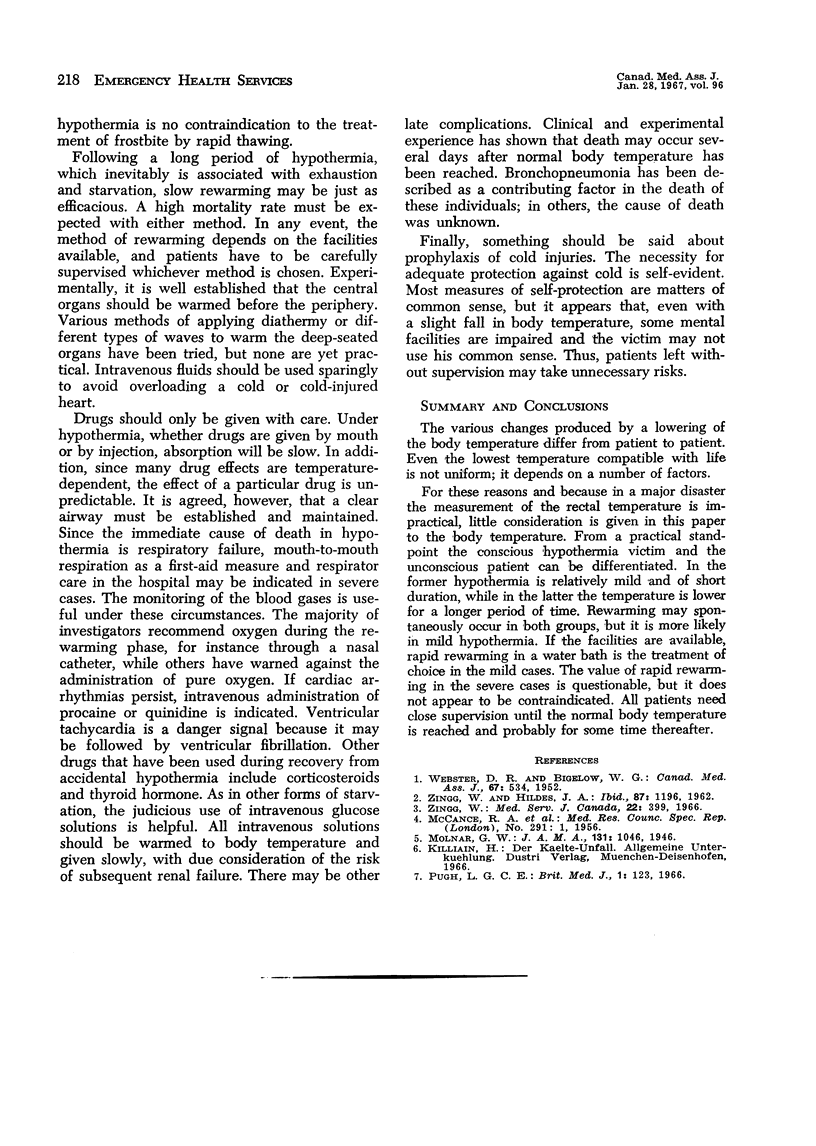
Selected References
These references are in PubMed. This may not be the complete list of references from this article.
- Pugh L. G. Accidental hypothermia in walkers, climbers, and campers: report to the Medical Commission on Accident Prevention. Br Med J. 1966 Jan 15;1(5480):123–129. doi: 10.1136/bmj.1.5480.123. [DOI] [PMC free article] [PubMed] [Google Scholar]
- Webster D. R., Bigelow W. G. Injuries Due to Cold, Frostbite, Immersion Foot and Hypothermia. Can Med Assoc J. 1952 Dec;67(Spec Issue):534–538. [PMC free article] [PubMed] [Google Scholar]
- ZINGG W., HILDES J. A. Cold injury in civil disaster. Can Med Assoc J. 1962 Dec 1;87:1196–1200. [PMC free article] [PubMed] [Google Scholar]
- Zingg W. Accidental hypothermia. Med Serv J Can. 1966 Jun;22(6):399–410. [PubMed] [Google Scholar]


